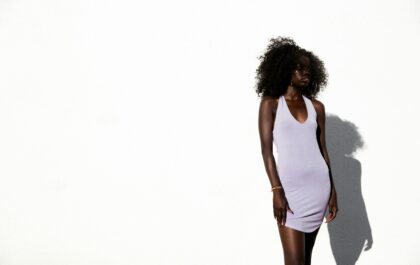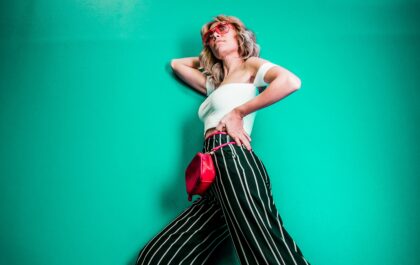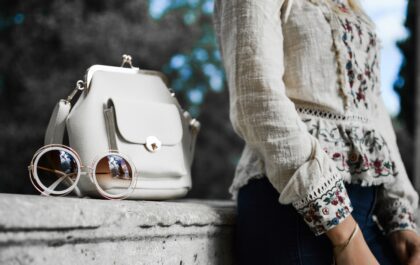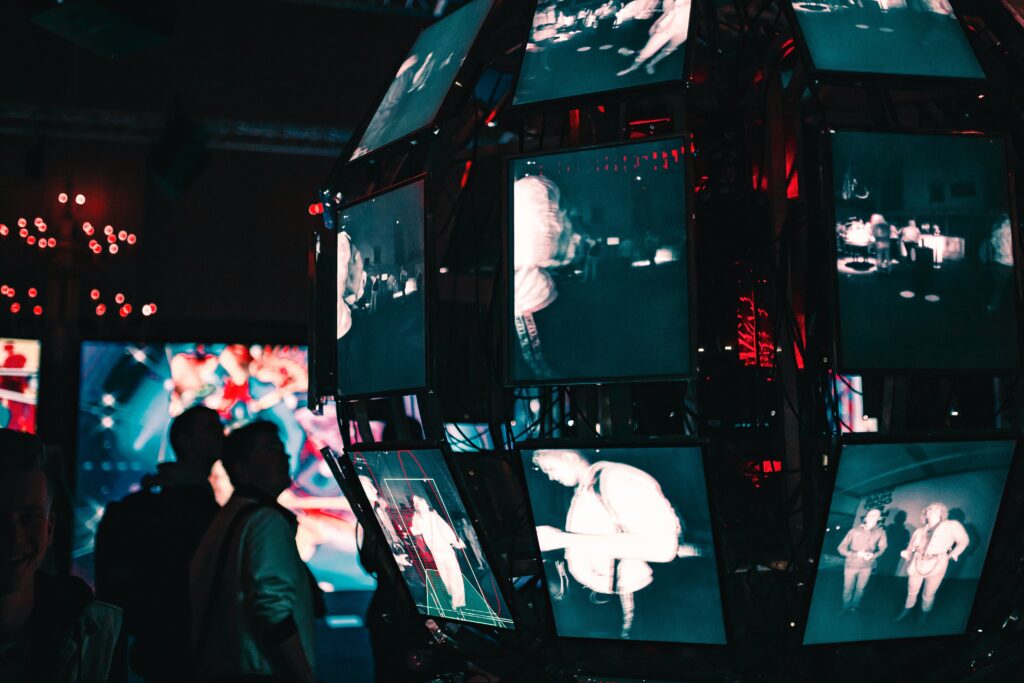Fashion is a dynamic and ever-evolving reflection of society, culture, and technology. Each decade brings its own unique trends, styles, and influences that shape the way we dress and express ourselves. From the flapper dresses of the 1920s to the bold streetwear of the 2010s, fashion has undergone a remarkable transformation over the years. In this blog, we’ll take a journey through time to explore the most iconic fashion trends that defined each decade and continue to influence our wardrobes today.
1920s: The Roaring Twenties and the Rise of the Flapper
The 1920s, often referred to as the Roaring Twenties, were a time of social and cultural change. After World War I, people sought to break free from the constraints of the past, leading to a decade of exuberance and rebellion.
Flapper Dresses: The flapper dress became the defining style of the 1920s. Characterized by its loose fit, dropped waist, and knee-length hemline, the flapper dress represented a departure from the restrictive corsets and long skirts of the previous era. Often adorned with fringe, sequins, and beads, these dresses were perfect for dancing the night away at jazz clubs.
Bobbed Haircuts: Women’s hairstyles also underwent a radical transformation, with the bobbed haircut becoming a symbol of modernity and independence. Short, sleek, and often paired with a cloche hat, the bob was a stark contrast to the long, elaborate hairstyles of the past.
Art Deco Influence: The art deco movement influenced fashion with its geometric shapes, bold colors, and luxurious materials. This aesthetic was reflected in clothing, accessories, and even architecture, making the 1920s a visually striking decade.
1930s: Glamour Amidst the Great Depression
The 1930s were marked by the Great Depression, a time of economic hardship that greatly impacted fashion. Despite the financial difficulties, fashion still found a way to maintain its elegance and glamour.
Bias-Cut Gowns: The bias-cut gown, popularized by designers like Madeleine Vionnet, became a symbol of 1930s fashion. These gowns, cut on the diagonal, hugged the body’s natural curves, creating a sleek and sophisticated silhouette. They were often made from luxurious fabrics like silk and satin, adding a touch of Hollywood glamour to everyday life.
Tailored Suits: Women’s fashion in the 1930s also saw the rise of tailored suits, often with padded shoulders and nipped-in waists. These suits exuded a sense of power and sophistication, reflecting the changing roles of women in society.
Muted Color Palettes: The color palettes of the 1930s were more subdued, reflecting the somber mood of the times. Soft pastels, earthy tones, and muted neutrals were popular choices, creating a sense of understated elegance.
1940s: Utility and Resilience During Wartime
The 1940s were dominated by World War II, which had a profound impact on fashion. With fabric rationing and a focus on practicality, fashion took on a more utilitarian aesthetic.
Utility Clothing: Utility clothing, designed to be practical and durable, became the norm during the war. Dresses were often knee-length with simple, clean lines, and many featured functional details like large pockets and belts. The use of synthetic fabrics like rayon became more common due to the scarcity of natural fibers.
Victory Suits: The victory suit, a tailored two-piece ensemble with a boxy jacket and a straight skirt, was a staple of women’s fashion during the war. These suits were practical for working women and conveyed a sense of strength and resilience.
Post-War Glamour: After the war ended, there was a return to glamour, with designers like Christian Dior leading the way with the “New Look.” This look featured full skirts, cinched waists, and an emphasis on femininity, marking a shift away from the austerity of wartime fashion.
1950s: The Era of Elegance and the Birth of the Teenager
The 1950s were a time of prosperity and optimism, reflected in the fashion of the era. This decade saw the emergence of distinct youth culture, with teenagers becoming a powerful influence on fashion trends.
Full-Skirted Dresses: The 1950s are often associated with the full-skirted dresses popularized by Christian Dior’s New Look. These dresses, with their cinched waists and voluminous skirts, created an hourglass silhouette that epitomized femininity and elegance.
Poodle Skirts and Saddle Shoes: Teenagers in the 1950s embraced a more casual style, with poodle skirts and saddle shoes becoming iconic symbols of the era. Poodle skirts were often paired with fitted cardigans and bobby socks, creating a playful and youthful look.
1950s: The Era of Elegance and the Birth of the Teenager
The 1950s were a time of prosperity and optimism, reflected in the fashion of the era. This decade saw the emergence of distinct youth culture, with teenagers becoming a powerful influence on fashion trends.
Poodle Skirts and Saddle Shoes: Teenagers in the 1950s embraced a more casual style, with poodle skirts and saddle shoes becoming iconic symbols of the era. Poodle skirts were often paired with fitted cardigans and bobby socks, creating a playful and youthful look.
Rockabilly Style: The rise of rock ‘n’ roll music brought about the rockabilly style, characterized by leather jackets, cuffed jeans, and pompadour hairstyles for men, and pin-up style dresses and cat-eye glasses for women. This style was rebellious and edgy, a stark contrast to the more conservative fashion of the time.
1960s: The Swinging Sixties and the Rise of Youth Culture
The 1960s were a time of social upheaval, with the civil rights movement, the counterculture, and the rise of youth culture all influencing fashion. This decade was all about breaking the rules and experimenting with new styles.
Mini Skirts: The mini skirt, popularized by designer Mary Quant, became the defining garment of the 1960s. Short, bold, and often paired with go-go boots, mini skirts represented the newfound freedom and liberation of the era.
Mod Fashion: The mod (short for modernist) fashion movement, characterized by clean lines, geometric patterns, and bold colors, was embraced by young people in the 1960s. This look often included tailored suits, shift dresses, and accessories like oversized sunglasses and statement earrings.
Hippie Movement: By the late 1960s, the hippie movement had taken hold, with fashion reflecting the counterculture’s embrace of peace, love, and freedom. Tie-dye shirts, bell-bottom jeans, fringe jackets, and floral headbands became symbols of the movement, influencing fashion for years to come.
1970s: The Decade of Disco, Glam, and Bohemian Chic
The 1970s were a decade of diversity in fashion, with trends ranging from glamorous disco looks to laid-back bohemian styles. This era was all about self-expression and individuality.
Disco Fever: The disco craze of the 1970s brought about a fashion revolution, with sequined dresses, platform shoes, and flared pants becoming the uniform of the dance floor. Metallic fabrics, bold colors, and over-the-top accessories defined the disco look, making it one of the most memorable fashion trends of the decade.
Bohemian Chic: The bohemian chic style, influenced by the counterculture of the 1960s, continued into the 1970s with flowing maxi dresses, peasant blouses, and wide-brimmed hats. This look was relaxed, earthy, and often featured ethnic prints, embroidery, and natural materials like suede and leather.
Glam Rock: The glam rock movement, led by icons like David Bowie and Marc Bolan, introduced a more androgynous and theatrical style. Glitter, metallics, and flamboyant outfits were all part of the glam rock aesthetic, challenging traditional notions of gender and fashion.
1980s: The Era of Excess and Power Dressing
The 1980s were all about bold statements, excess, and power dressing. This decade saw the rise of consumerism, with fashion reflecting the desire for status and success.
Power Suits: Power dressing became a defining trend of the 1980s, with women in the workplace embracing tailored suits with broad shoulders, often paired with blouses featuring bold patterns or ruffles. This look was all about projecting confidence and authority.
Athleisure: The 1980s also saw the birth of athleisure, with tracksuits, leggings, and sneakers becoming everyday fashion staples. Brands like Adidas and Nike became synonymous with this trend, which blurred the lines between sportswear and casual wear.
Neon and Bold Colors: The 1980s were a riot of color, with neon hues, bright primaries, and bold patterns dominating fashion. From oversized sweaters to parachute pants, the decade’s fashion was loud, fun, and unapologetically bold.
1990s: The Rise of Minimalism and Grunge
The 1990s were a decade of contrasts, with minimalism and grunge emerging as two of the most influential fashion movements.
Grunge Fashion: Inspired by the music scene in Seattle, grunge fashion was characterized by a laid-back, “anti-fashion” attitude. Flannel shirts, ripped jeans, oversized sweaters, and combat boots became the uniform of the grunge movement, challenging the polished looks of the 1980s.
Minimalism: In contrast to the grunge movement, minimalism in the 1990s was all about simplicity and understated elegance. Slip dresses, neutral tones, and clean lines defined this trend, with designers like Calvin Klein and Jil Sander leading the way.
Denim Dominance: Denim was everywhere in the 1990s, from high-waisted jeans to denim jackets and overalls. The “double denim” look, once considered a fashion faux pas, became a popular trend, with celebrities and fashion icons embracing the denim-on-denim style.
























